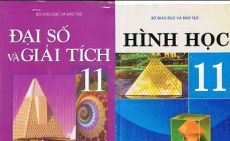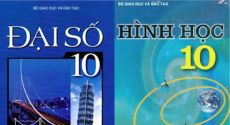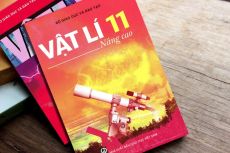Read the text below and decide which answer (A,B,C, or D) best fits each space.
BICYCLES
Why don’t the British cycles? Only a quarter of the estimated twenty million bicycles in the country are thought to be in (58) …….. use. In Denmark, which is flatter but no darker or rainier than Britain, twenty percent of all journeys are made by bicycles, while in Britain the (59) …….. is only 5%. The government are trying to (60) …….. this. It is hoped that a grant of millions of pounds from the National Lottery will (61)…….. more people to use their bikes. The money will be used to (62) …….. for a 6,500 mile national network of cycle tracks. Britain needs to (63) …….. environmentally friendly scheme such as this. The southern third of the country is one of the most (64)…….. areas of the world. Environmentalists make it (65) …….. to build new roads, and (66) …….. roads are overcrowded. One official committee described the growth of motor transport as “possibly the (67) ……. environmental threat to the UK”. The (68)…….. of building the cycles tracks is to motivate people to use their bicycles instead of their cars. However, the new tracks are being built (69) …….. cities and not through them. This (70) …….. that only long distance journeys may be easier and safer. Those cyclists who want to (71) …….. inside cities will still be in danger of (72) …….. their lives on busy roads every time they use their bicycles.
63...................
Hãy suy nghĩ và trả lời câu hỏi trước khi xem đáp án
Lời giải:
Báo saiGiải thích: introduce (v): giới thiệu, đưa vào
Những đáp án còn lại:
A. Do (v): làm (những cái gì có sẵn) B. Commence (v): khởi đầu
D. Make (v): làm, tạo ra (những cái gì chưa có)
Câu hỏi liên quan
-
Large animals that inhabit the desert have evolved a number of adaptations for reducing the effects of extreme heat. One adaptation is to be light in color, and to reflect rather than absorb the Sun's rays. Desert mammals also depart from the normal mammalian practice of maintaining a constant body temperature. Instead of trying to keep down the body temperature deep inside the body, which would involve the expenditure of water and energy, desert mammals allow their temperatures to rise to what would normally be fever height, and temperatures as high as 46 degrees Celsius have been measured in Grant's gazelles. The overheated body then cools down during the cold desert night, and indeed the temperature may fall unusually low by dawn, as low as 34 degrees Celsius in the camel. This is an advantage since the heat of the first few hours of daylight is absorbed in warming up the body, and an excessive buildup of heat does not begin until well into the day.
Another strategy of large desert animals is to tolerate the loss of body water to a point that would be fatal for non-adapted animals. The camel can lose up to 30 percent of its body weight as water without harm to itself, whereas human beings die after losing only 12 to 13 percent of their body weight. An equally important adaptation is the ability to replenish this water loss at one drink. Desert animals can drink prodigious volumes in a short time, and camels have been known to imbibe over 100 liters in a few minutes. A very dehydrated person, on the other hand, cannot drink enough water to rehydrate at one session, because the human stomach is not sufficiently big and because a too rapid dilution of the body fluids causes death from water intoxication. The tolerance of water loss is of obvious advantage in the desert, as animals do not have to remain near a water hole but can obtain food from grazing sparse and far-flung pastures. Desert-adapted mammals have the further ability to feed normally when extremely dehydrated, it is a common experience in people that appetite is lost even under conditions of moderate thirst.
The word "maintaining" is closest in meaning to ..................
-
Read the passage Carefully, then choose the correct answer.
The Southeast Asian Games owes its origins to the Southeast Asian Peninsular Games or SEAP Games. On May 22, 1958, delegates from the countries in Southeast Asian peninsula attending the 3rd Asian Game's in Tokyo, Japan had a meeting and agreed to establish a sport organization. The SEAP Games was conceptualized by Laung Sukhumnaipradit, then Vice-President of the Thailand Olympic Committee. The proposed rationale was that a regional sports event will help promote cooperation, understanding and relations among countries in the Southeast Asian region.
Thailand, Myanmar, Malaysia, Laos, Vietnam and Cambodia (with Singapore Included thereafter) were the founding members. These countries agreed to hold the Games biennially. The SEAP Games Federation Committee was formed.
The first SEAP Games were held in Bangkok from 12-17 December , 1959 comprising more than 527 athletes and officials from Thailand, Myanmar, Malaysia, Singapore, South Vietnam and Laos participating in 12 sports.
At the 8th SEAP Games in 1975, the SEAP Federation considered the inclusion of Indonesia and the Philippines. The two countries were formally admitted In 1977, the same year when SEAP Federation changed their name to Southeast Asian Games Federation (SEAGF), and the games were known as the Southeast Asian Games. Brunei was admitted at the 10th SEA Game in Jakarta, Indonesia, and East Timor at the 22nd SEA Games in Hanoi, Vietnam.
The 2007 Southeast Asian Games were held in the Thailand, which started from 6 December and ended on 15 December 2007, hosting the biennial event for the sixth time and it was also the most protested SEAG ever. The next host for the SEA Games is Laos. It is Laos' first time at the host for the biannual games.The SEAP Games were first held in __________
-
Read the following passage and mark the letter A, B, C, or D on your answer sheet to indicate the correct answer to each of the questions.
Coral reefs are some of the most diverse ecosystems in the world, housing tens of thousands of marine species. With their hardened surfaces, corals are sometimes mistaken as being rocks. And, because they are attached, “taking root” to the seafloor, they are often mistaken for plants. However, unlike rocks, corals are alive. And unlike plants, corals do not make their own food. Corals are in fact animals. Appearing as solitary forms in the fossil record more than 400 million years ago, corals are extremely ancient animals that evolved into modern reef-building forms over the last 25 million years.
Coral reefs are the largest structures on earth of biological origin. Coral reefs are unique and complex systems. Rivaling old growth forests in longevity of their ecological communities, well-developed reefs reflect thousands of years of history.
Corals are ancient animals related to jellyfish and anemones. The branch or mound that we often call “a coral” is actually made up of thousands of tiny animals called polyps. A coral polyp is an invertebrate that can be no bigger than a pinhead to up to 30 centimeters (1 foot) in diameter. The polyps extend their tentacles at night to sting and ingest tiny organisms called plankton and other small creatures. Each polyp has a saclike body and a mouth that is encircled by stinging tentacles. The polyp uses calcium carbonate (limestone) from seawater to build a hard, cup-shaped skeleton. This skeleton protects the soft, delicate body of the polyp.
Reefs only occur in shallow areas that are reachable by sunlight because of the relationship between coral and algae. Various types of microscopic algae, known as Symbiodinium, live inside of the coral, providing them with food and helping them to grow faster.
There are over 2,500 kinds (species) of corals. About 1,000 are the hard corals that build coral reefs. Other corals are soft corals. Soft corals have skeletons that are flexible and can bend with the water. The three main types of coral reefs are fringing reefs, barrier reefs, and coral atolls. The most common type of reef is the fringing reef. This type of reef grows seaward directly from the shore. They form borders along the shoreline and surrounding islands. When a fringing reef continues to grow upward from a volcanic island that has sunk entirely below sea level, an atoll is formed. Atolls are usually circular or oval in shape, with an open lagoon in the center. Any reef that is called a barrier reef gets its name because its presence protects the shallow waters along the shore from the open sea. That protection promotes the survival of many types of sea plant and animal life.According to the passage, the following are true about coral reefs, EXCEPT ____________.
-
Read the following passage and mark the letter A, B, C, or D on your answer sheet to indicate the correct answer to each of the questions.
In our connected globalized world, the languages which dominate communications and business, Mandarin, Hindi, English, Spanish and Russian amongst others, are placing small languages spoken in remote places under increasing pressure. Fewer and fewer people speak languages such as Liki, Taushiro and Dumi as their children shift away from the language of their ancestors towards languages which promise education, success and the chance of a better life. While to many parents, this may appear a reasonable choice, giving their offspring the opportunity to achieve the sort of prosperity they see on television, the children themselves often lose touch with their roots. However, in many places the more reasonable option of bilingualism, where children learn to speak both a local and a national language, is being promoted. This gives hope that many endangered languages will survive, allowing people to combine their links to local tradition with access to wider world culture.
While individuals are free to choose if they wish to speak a minority language, national governments should be under no obligation to provide education in an economically unproductive language, especially in times of budget constraints. It is generally accepted that national languages unite and help to create wealth while minority regional languages divide. Furthermore, governments have a duty to ensure that young people can fulfil their full potential, meaning that state education must provide them with the ability to speak and work in their national language and so equip them to participate responsibly in national affairs. People whose language competence does not extend beyond the use of a regional tongue have limited prospects. This means that while many people may feel a sentimental attachment to their local language, their government’s position should be one of benign neglect, allowing people to speak the language, but not acting to prevent its eventual disappearance.
Many PhD students studying minority languages lack the resources to develop their language skills, with the result that they have to rely on interpreters and translators to communicate with speakers of the language they are studying. This has a detrimental effect on the quality of their research. At the same time, they have to struggle against the frequently expressed opinion that minority languages serve no useful purpose and should be allowed to die a natural death. Such a view fails to take into account the fact that a unique body of knowledge and culture, built up over thousands of years, is contained in a language and that language extinction and species extinction are different facets of the same process. They are part of an impending global catastrophe which is beginning to look unavoidable.What is the influence of the shortage of minority language resources on many PhD students mentioned in paragraph 3?
-
Choose the letter A, B, C or D to complete the passage below
HÀ NỘI — The Government has approved the Ministry of Culture, Sports, and Tourism’s proposal to hold the 31st Southeast Asian Games (SEA Games 31) and the 11th ASEAN Para Games (Para Games 11) in Việt Nam in 2021.
At a meeting in the capital on Tuesday, the Cabinet assigned Hà Nội __________ (6) the host city, after successfully holding the SEA Games 22 in 2003, the Asian Indoor Games in 2009 and several other international sporting __________ (7). The ministry’s proposal was made after the SEA Games Federation (SEAGF) informed Việt Nam it would have the right to host the SEA Games 31. The federation said Cambodia, scheduled to host SEA Games 31, proposed __________ (8) hosting until the next Games in 2023 as it is not ready.
Concluding the meeting, Prime Minister Nguyễn Xuân Phúc lauded the determination of the culture, sports and tourism sector, as well as of Hà Nội and relevant ministries and agencies. Hosting the events is both the responsibility __________ (9) honour of Việt Nam as a constructive member of ASEAN, he said, adding it is also a chance to promote the Vietnamese land and people. The leader asked Hà Nội __________ (10) infrastructure, set forth a detailed plan on the organisation of the events and mobilise the participation of different economic sectors in these efforts. The sports sector should make preparations to reach the highest results at the tournament, he said.
At a meeting in the capital on Tuesday, the Cabinet assigned Hà Nội as the host city, after successfully holding the SEA Games 22 in 2003, the Asian Indoor Games in 2009 and several other international sporting __________ (7).
-
Choose the word or phrase among A, B, C or D that best fits the blank space in the following passage:
"The 22nd SEA Games were launched by an impressive opening ceremony at Hanoi’s My Dinh National Stadium, in front of over 40,000 awed spectators. Divided into two parts, rites and festivals, the ceremony (1)…. At 19:00 with the song, “Vietnam - Our Fatherland”. The (2)….. appearance of parachutists, carrying the 11 national flags of the competing Southeast Asian countries, was greeted (3) …. thunderous applause from the audience.
All the stadium’s lights suddenly came on, (4)…. the start of the procession of Vietnam’s flag and the 22nd SEA Games' Symbol. The 11 sporting delegations then marched past the reviewing stand to excite applause from officials and spectators.
The sacred torch, which symbolises the (5)….. of the Games and (6)… to compete with burning intensity, was taken from the Ho Chi Minh Museum and passed by Truong Quoc Thang (cyclist), Bui Thi Nhung (runner), Vu Kim Anh (karate artist) and athletes from 10 regional countries to Nguyen Thuy Hien (wushu artist) (7)….. gave it to the Prime Minister, who in tum passed it to an athlete dressed like national hero Giong.
From this athlete’s hand, the official flame was lit at My Dinh National Stadium and will bum (8) …… the course of the Games. (9)…… at the opening ceremony, Minister-Chairman of the Physical Training and Sports Committee Nguyen Danh Thai, who is also the head of the 22nd SEA Games Organising Board, warmly welcomed Party and State leaders, delegates, domestic and international guests, and 11 sports delegations from Southeast Asian countries to the 22nd SEA Games.
(10)……. behalf of the host country, Prime Minister Phan Van Khai declared the 22nd SEA Games open."10. (10)……. behalf of the host country, Prime Minister Phan Van Khai declared the 22nd SEA Games open.
-
The Japan of the mid-nineteenth century was a shadow of the modern economic juggernaut that is now one of the world's leading traders. For hundreds of years, Japan had been secluded from the outside world by the strict policies of the rulers of Japan, the Tokugawa shoguns. With the exception of one Dutch ship per year at the port of the Nagasaki, the Japanese refused to deal with foreign ships or nations. Sailors shipwrecked on the Japanese islands were treated harshly and often imprisoned. Passing vessels were refused food, water, and other provisions. With a goal to right these wrongs and to open Japan to trade, in 1853, the United States sent its most capable man, Admiral Matthew Perry, and four warships to open Japan to the rest of the world. The consequences of those actions are still being felt today.
In the seventeenth century, the Japanese had opened their doors briefly to the Dutch and allowed a trading station and Christian enclave in Nagasaki. Guns were imported as part of this trade, and they were one of the reasons for a great upheaval that engulfed Japan for many decades, as a civil war raged between powerful shoguns, or warlords. Finally, Tokugawa emerged as the victor and claimed the lordship of Japan. During these upheavals, the emperor and his family had stood by wielding no power and existed merely as a figurehead. Soon after the civil war, the abandoned the use of guns and the art of the gun making. When Admiral Perry and his fleet arrived in 1853, they were defenseless against his awesome firepower.
Perry had three main purposes when he arrived in Japan: open the country to American trade, get an agreement to use Japan as a coaling and provisioning station for American vessels, and provide guarantees that Japan would aid shipwrecked American sailors. He wished to deal only with the highest officials and rebuffed Japanese attempts to foster lower-level emissaries on him. He sailed away to examine further the coast of Taiwan as a possible coaling station but returned to Japan the following spring in March 1854. This time, under threat of naval bombardment, the Japanese relented and finally signed the Treaty of Kanagawa on March 31, 1854. In addition to the three main items, the Japanese agreed to allow an American consulate to be established. At first, only Nagasaki was open to American trade, but the treaty stipulated that, after five years, other ports would be opened.
The consequences of these events were far reaching for Japan and the world. Within a few years, foreign currency began to flow to Japan, which upset its economy and caused rising inflation. This was a precursor to the fall of the Tokugawa shoguns and the return of the emperor as the leader of Japanese affairs in 1868. The Emperor Meiji then set a clear path for his nation, not wanting Japan to be under the heel of the foreigners who now clamored at the heel of the foreigners of his land. Meiji sent sailors to England to learn how to build ships and fight a modern naval war, invited German army officers to train his soldiers, and made deals with many companies to modernize Japan's industry, transportation, and communications. In fact, the efforts were so successful that, by the 1980s, the world began to view Japan as one of the great powers, more so after it defeated both China and Russia on land and at sea in two local wars. The Russian defeat was even more astonishing since the Europeans were unused to losing to those they considered their inferiors.
Japan's rapid industrialized and militarization had dreadful consequences for Asia, as Meiji's grandson Hirohito led the nation down the path to world war, which ultimately saw the destruction of much of Japan. The shock of this defeat still echoes through Japanese history, as does the arriv -
Read the following passage and mark the letter A, B, C, or D on your answer sheet to indicate the correct answer to each of the questions.
No matter how much you’ve trained, performance anxiety before or during a competition may occur, hindering the results of your match.
While you can tell yourself to stay calm prior to a competition, managing performance anxiety may not be as simple as. Research has shown that strategies such as meditation and guided imagery are great places to start; both require your brain to rehearse what you will do during your competition. Your imagination holds much more power than you may expect, helping you focus on how to beat your opponent, instead of other factors that contribute to your anxiety. Adequate preparation also plays a large role.
To master the mental game, it takes time. Starting one month before your competition, consider sitting in solitude in a comfortable position for 15 minutes each day. Focus first on breathing in and out deeply. Then, begin to imagine competition situations and visualize yourself in a fight with your competitor. Be mindful of your anxiety and return your focus to breathing if you feel yourself tense up. Sometimes, you may find yourself thinking self-deprecating or negative thoughts, at which point you should consciously replace any negative self-talk with positive self-talk. During these visualizations, also be sure to think about your posture and form and create cues — mental and verbal — that will help you review and correct your technique.
Pre-competition jitters are completely normal and it’s important to acknowledge that. Accepting that this excitement and/or nervousness is normal will help your body also understand that what you are experiencing is not fear, but perhaps part of your adrenaline response to competition. With more experience, mindful visualization and mental/physical preparation can help you manage and overcome performance anxiety.The word “hindering” in paragraph 1 is closest in meaning to ______.
-
Psychologists have debated a long time about whether a child's upbringing can give it the ability to do outstandingly well. Some think that it is impossible to develop genius and say that it is simply something a person is born with. Others, however, argue that the potential for great achievement can be developed. The truth lies somewhere between these two extremes.
It seems very obvious that being born with the right qualities from gifted parents will increase a child's ability to do well. However, this ability will be fully realized only with the right upbringing and opportunities. As one psychologist says, "To have a fast car, you need both a good engine and fuel.” Scientists have recently assessed intelligence, achievement, and ability in 50 sets of identical twins that were separated shortly after birth and brought up by different pa rents. They found that achievement was based on intelligence, and later influenced by the child's environment
One case involving very intelligent twins was quoted. One of the twins received a normal upbringing, and performed well. The other twin, however, was brought up by extremely supportive parents and given every possible opportunity to develop its abilities. That twin, though starting out with the same degree of intelligence as the other, performed even better.
This case reflects the general principle of intelligence and ability. The more favorable the environment, the more a child's intelligence and ability are developed. However, there is no link between intelligence and the socioeconomic level of a child's family. In other words, it does not matter how poor or how rich a family is, as this does not affect intelligence.
Gifted people cannot be created by supportive parents, but they can be developed by them.
One professor of music said that outstanding musicians usually started two or three years earlier than ordinary performers, often because their parents had recognized their ability. These musicians then needed at least ten years' hard work and training in order to reach the level they were capable of attaining.
People who want to have very gifted children are given the following advice:
- Marry an intelligent person.
- Permit children to chase their own interests rather than the interests of the parents.
- Start a child's education early but avoid pushing the child too hard.
- Encourage children to play; for example, playing with musical instruments is essential for a child who wants to become an outstanding musician.Scientists chose twins for their study because .......................
-
Read the following passage and mark the letter A, B, C, or D on your answer sheet to indicate the correct answer to each of the questions.
To quote CREST founder Dr. Martha Honey, we earnestly believe that ecotourism is “simply a better way to travel.” Here’s a look at how this transformational approach to travel benefits conservation, increases cross-cultural understanding, and ultimately turns travelers into environmental advocates:
To see how ecotourism benefits nature and wildlife, let’s look at endangered species such as African Elephants. Ivory from Elephant tusks is worth $1500 a pound on the black market, which has led to a dramatic increase in poaching. But Elephants are worth 76 times more alive than dead. When you consider the revenue from wildlife photography tours, luxury safari camps, and other ecotourism offerings, a single Elephant is worth $1.3 million over the course of its lifetime! Ecotourism offers a long-term alternative to exploitation, generating sustainable revenue and ensuring better overall health of the ecosystem.
Nature reserves and national parks help prevent deforestation and pollution, while also protecting the habitat of endemic species. The revenue that ecotourism provides can help replace profits from exploitative practices such as mining or slash ‘n’ burn agriculture. It can also help ensure the long-term financial viability of the area. Naturalist guides also help travelers understand the value of a pristine ecosystem, and teach them about the importance of conservation. This ultimately help to create a more mindful and conscious legion of travelers.
When managed properly, ecotourism can offer locals alternative revenue streams. In wildlife-rich countries such as Rwanda, former poachers are often employed as guides or trackers, capitalizing on their knowledge of the animals and their habitat. In Costa Rica, unemployment has fallen to less than 10% since the country started building its ecotourism infrastructure in the 1970s. Involving local communities in tourism management empowers them by ensuring that more revenue is reinvested locally. Ecotourism also offers indigenous peoples an opportunity to remain on ancestral land, conserve it, and preserve traditional culture.
Sure, being a responsible traveler takes a greater level of commitment to being conscious and mindful of the impact we have on the destinations we visit. But ecotourism also offers us incredible, transformative experiences, allowing us to develop closer personal relationships to the nature, wildlife, and local people we encounter during our adventures. Learning about ecotourism can permanently change your understanding of mankind’s role in our planetary ecosystem. And once you’ve had that sort of travel experience, you’ll never want to travel the traditional way again.The word “revenue” in paragraph 2 most likely means _______.
-
Choose the item among A, B, C or D that best answers the question about the passage:
"The 22nd Southeast Asian Games were held in Hanoi, Vietnam from 5 December to 13 December, 2003. The Games were opened by Vietnamese Prime Minister Phan Van Khai in the newly constructed My Dinh National Stadium in Hanoi. The Games torch was lit by Nguyen Thuy Hien of Wushu. It was the First time in the SEA Games history that the Games venues were assigned into two cities namely Hanoi and Ho Chi Minh City.
The 22nd SEA Games logo designed by painter Nguyen Chi Long is based on a legendary bird named “Chim Lac”. The bird decorated the Ngoe Lu bronze drum, a typical antiquity of the ancient Dong Son Vietnamese culture. The Emblem is composed of harmonious and vigorous curves, creating a feeling of movement and strength which conforms to the Olympic Spirit: “Faster. Higher and Stronger The colorful whirls represent the tough competitiveness in sports.
The Games’ hymn was “For the World of Tomorrow” composed by Nguyen Quang Vinh. Painter Nguyen Thai Hung chose “Trau Vang”, the golden water buffalo as the mascot for the 22nd SEA Games. With a gentle and harmonious nature, the clever Buffalo has become synonymous with the water and rice civilization that is so important in Vietnam as well as in other Southeast Asian countries. To Vietnamese people, the Golden Buffalo symbolizes a golden harvest, prosperity, happiness, power and the Vietnamese martial spirit."1. In which cities in Vietnam were the 22nd Southeast Asian Games held?
-
Read the following passage and mark the letter A, B, C, or D on your answer sheet to indicate the correct answer to each of the questions.
Coral reefs are some of the most diverse ecosystems in the world, housing tens of thousands of marine species. With their hardened surfaces, corals are sometimes mistaken as being rocks. And, because they are attached, “taking root” to the seafloor, they are often mistaken for plants. However, unlike rocks, corals are alive. And unlike plants, corals do not make their own food. Corals are in fact animals. Appearing as solitary forms in the fossil record more than 400 million years ago, corals are extremely ancient animals that evolved into modern reef-building forms over the last 25 million years.
Coral reefs are the largest structures on earth of biological origin. Coral reefs are unique and complex systems. Rivaling old growth forests in longevity of their ecological communities, well-developed reefs reflect thousands of years of history.
Corals are ancient animals related to jellyfish and anemones. The branch or mound that we often call “a coral” is actually made up of thousands of tiny animals called polyps. A coral polyp is an invertebrate that can be no bigger than a pinhead to up to 30 centimeters (1 foot) in diameter. The polyps extend their tentacles at night to sting and ingest tiny organisms called plankton and other small creatures. Each polyp has a saclike body and a mouth that is encircled by stinging tentacles. The polyp uses calcium carbonate (limestone) from seawater to build a hard, cup-shaped skeleton. This skeleton protects the soft, delicate body of the polyp.
Reefs only occur in shallow areas that are reachable by sunlight because of the relationship between coral and algae. Various types of microscopic algae, known as Symbiodinium, live inside of the coral, providing them with food and helping them to grow faster.
There are over 2,500 kinds (species) of corals. About 1,000 are the hard corals that build coral reefs. Other corals are soft corals. Soft corals have skeletons that are flexible and can bend with the water. The three main types of coral reefs are fringing reefs, barrier reefs, and coral atolls. The most common type of reef is the fringing reef. This type of reef grows seaward directly from the shore. They form borders along the shoreline and surrounding islands. When a fringing reef continues to grow upward from a volcanic island that has sunk entirely below sea level, an atoll is formed. Atolls are usually circular or oval in shape, with an open lagoon in the center. Any reef that is called a barrier reef gets its name because its presence protects the shallow waters along the shore from the open sea. That protection promotes the survival of many types of sea plant and animal life.The word “solitary” in the first paragraph could be best replaced by ____________.
-
Read the following passage and mark the letter A, B, C, or D on your answer sheet to indicate the correct answer to each of the questions.
The mineral particles found in soil range in size from microscopic clay particles to large boulders. The most abundant particles - sand, silt, and clay - are the focus of examination in studies of soil texture. Texture is the term used to describe the line composite sizes of particles in a soil sample, typically several representative handfuls . To measure soil texture, the sand, silt, and clay particles are sorted out by size and weight. The weights of each size are then expressed as a percentage of the sample weight.
In the field, soil texture can be estimated by extracting a handful of sod and squeezing the damp soil into three basic shapes; (1) cast, a lump formed by squeezing a sample in a clenched fist; (2) thread, a pencil shape formed by rolling soil between the palms; and (3) ribbon, a flatfish shape formed by squeezing a small sample between the thumb and index finger. The behavioral characteristics of the soil when molded into each of these shapes, if they can be formed at all, provides the basis for a general textural classification. The behavior of the soil in the hand test is determined by the amount of clay in the sample. Clay particles are highly cohesive, and when dampened , behave as a plastic. Therefore the higher the clay content in a sample, the more refined and durable the shapes into which it can be molded.
Another method of determining soil texture involves the use of devices called sediment sieves, screens built with a specified mesh size. When the soil is filtered through a group of sieves, each with a different mesh size, the particles become grouped in corresponding size categories. Each category can be weighed to make a textural determination. Although sieves work well for silt, sand, and larger particles, they are not appropriate for clay particles. Clay is far too small to sieve accurately; therefore, in soils with a high proportion of clay, the fine particles are measured on the basis of their settling velocity when suspended in water. Since clays settle so slowly, they are easily segregated from sand and silt. The water can be drawn off and evaporated, leaving a residue of clay, which can be weighed.
It can be inferred from the passage that the sediment sieve has an advantage over the hand test in determining soil texture because ______.
-
Almost as soon as World War II ended, the debate began over who had actually done the most on the Allied side to ensure the defeat of the Axis powers. The Russians only needed to point to their twenty million plus war dead to justify their rights in Eastern Europe and their new position as a great power on the world stage. Yet, Americans could also claim that they had done as much, if not more, as the Russians to defeat the Axis enemy. In hindsight, it is obvious that despite its greater number of dead, the Russian effort ranks second place to the American. In particular, the American effort seems greater in light of three crucial points: it was fighting at extreme distances from its home territory; it simultaneously fought three different enemies on a multitude of complex fronts with air, naval, land forces; and finally, it supplied many other fighting forces, including the Russians, with massive amounts ofmaterial.
The main fronts of World War II were in North Africa, Italy, Western and Eastern Europe, the Pacific Ocean, China, and India. The United States military forces fought on or supported every front, all of which were at extreme distances from the continental United States. A great logistical effort required to support both its own forces and those of many other nations. Above all, supply ships were essential because without the supply ships, all would have been in vain. Keeping the world's sea lanes free was one of the great accomplishments of the United States Navy and her allies, especially the British and Canadians. This allowed ships to traverse great distances and bring American and other Allied fighting forces to face the Axis powers. The Russians, on the other hand, were fighting in their own country for much of the war and were close to their supply lines. They fought on one continuous font and did not have to travel far to meet the enemy.
The United States fought all three great Axis powers during the war: Germany, Japan, and Italy. While it cannot be denied that the Russian did the lion's share of the fighting against Germany and the lesser Axis powers of Finland, Hungary, Romania, and Bulgaria for a longer time, it was not until the last days of the war that Russia attacked Japan. As for the Italians, the Russians only met the reluctant few whom Hitler managed to coerce for his Russian campaign. Another area to take into consideration is the strategic bombing campaign that the Americans and British waged against German industry, something that the Russians did not take part in at all. Finally, with the exception of the Baltic Sea, the Russian navy played a very minor role in the war compared to American's navy. Despite significant aid from the British, Australians, and New Zealanders, the Americans bore the brute of the Pacific fighting.
The Chinese tied down a massive number of Japanese troops on the Asian mainland, but they were supplied almost exclusively by the United States. American arms, support equipment, food, and clothing went to the four corners of the world during the war even before American officially entered it in 1941. Indeed, the Russian Red Army rode into Eastern Europe on the wheels of over 300,000 American trucks, fed itself on a diet of American canned ham, and wore
American boots. Coupled with all this were billion-dollar loans with generous terms of interest, which America gave to its allies. American was the only Allied nation that did not need to borrow any money during the war.
Russia's combat dead were approximately eight million. American's number of combat deal was nowhere near the equal of the Russia's comprising less than five percent of the number of Russian combat deaths. This is not only a reflection of the intensity of the fighting in Eastern Euro
-
Almost as soon as World War II ended, the debate began over who had actually done the most on the Allied side to ensure the defeat of the Axis powers. The Russians only needed to point to their twenty million plus war dead to justify their rights in Eastern Europe and their new position as a great power on the world stage. Yet, Americans could also claim that they had done as much, if not more, as the Russians to defeat the Axis enemy. In hindsight, it is obvious that despite its greater number of dead, the Russian effort ranks second place to the American. In particular, the American effort seems greater in light of three crucial points: it was fighting at extreme distances from its home territory; it simultaneously fought three different enemies on a multitude of complex fronts with air, naval, land forces; and finally, it supplied many other fighting forces, including the Russians, with massive amounts ofmaterial.
The main fronts of World War II were in North Africa, Italy, Western and Eastern Europe, the Pacific Ocean, China, and India. The United States military forces fought on or supported every front, all of which were at extreme distances from the continental United States. A great logistical effort required to support both its own forces and those of many other nations. Above all, supply ships were essential because without the supply ships, all would have been in vain. Keeping the world's sea lanes free was one of the great accomplishments of the United States Navy and her allies, especially the British and Canadians. This allowed ships to traverse great distances and bring American and other Allied fighting forces to face the Axis powers. The Russians, on the other hand, were fighting in their own country for much of the war and were close to their supply lines. They fought on one continuous font and did not have to travel far to meet the enemy.
The United States fought all three great Axis powers during the war: Germany, Japan, and Italy. While it cannot be denied that the Russian did the lion's share of the fighting against Germany and the lesser Axis powers of Finland, Hungary, Romania, and Bulgaria for a longer time, it was not until the last days of the war that Russia attacked Japan. As for the Italians, the Russians only met the reluctant few whom Hitler managed to coerce for his Russian campaign. Another area to take into consideration is the strategic bombing campaign that the Americans and British waged against German industry, something that the Russians did not take part in at all. Finally, with the exception of the Baltic Sea, the Russian navy played a very minor role in the war compared to American's navy. Despite significant aid from the British, Australians, and New Zealanders, the Americans bore the brute of the Pacific fighting.
The Chinese tied down a massive number of Japanese troops on the Asian mainland, but they were supplied almost exclusively by the United States. American arms, support equipment, food, and clothing went to the four corners of the world during the war even before American officially entered it in 1941. Indeed, the Russian Red Army rode into Eastern Europe on the wheels of over 300,000 American trucks, fed itself on a diet of American canned ham, and wore
American boots. Coupled with all this were billion-dollar loans with generous terms of interest, which America gave to its allies. American was the only Allied nation that did not need to borrow any money during the war.
Russia's combat dead were approximately eight million. American's number of combat deal was nowhere near the equal of the Russia's comprising less than five percent of the number of Russian combat deaths. This is not only a reflection of the intensity of the fighting in Eastern
-
Read the following passage and mark the letter A, B, C, or D on your answer sheet to indicate the correct answer to each of the questions.
To quote CREST founder Dr. Martha Honey, we earnestly believe that ecotourism is “simply a better way to travel.” Here’s a look at how this transformational approach to travel benefits conservation, increases cross-cultural understanding, and ultimately turns travelers into environmental advocates:
To see how ecotourism benefits nature and wildlife, let’s look at endangered species such as African Elephants. Ivory from Elephant tusks is worth $1500 a pound on the black market, which has led to a dramatic increase in poaching. But Elephants are worth 76 times more alive than dead. When you consider the revenue from wildlife photography tours, luxury safari camps, and other ecotourism offerings, a single Elephant is worth $1.3 million over the course of its lifetime! Ecotourism offers a long-term alternative to exploitation, generating sustainable revenue and ensuring better overall health of the ecosystem.
Nature reserves and national parks help prevent deforestation and pollution, while also protecting the habitat of endemic species. The revenue that ecotourism provides can help replace profits from exploitative practices such as mining or slash ‘n’ burn agriculture. It can also help ensure the long-term financial viability of the area. Naturalist guides also help travelers understand the value of a pristine ecosystem, and teach them about the importance of conservation. This ultimately help to create a more mindful and conscious legion of travelers.
When managed properly, ecotourism can offer locals alternative revenue streams. In wildlife-rich countries such as Rwanda, former poachers are often employed as guides or trackers, capitalizing on their knowledge of the animals and their habitat. In Costa Rica, unemployment has fallen to less than 10% since the country started building its ecotourism infrastructure in the 1970s. Involving local communities in tourism management empowers them by ensuring that more revenue is reinvested locally. Ecotourism also offers indigenous peoples an opportunity to remain on ancestral land, conserve it, and preserve traditional culture.
Sure, being a responsible traveler takes a greater level of commitment to being conscious and mindful of the impact we have on the destinations we visit. But ecotourism also offers us incredible, transformative experiences, allowing us to develop closer personal relationships to the nature, wildlife, and local people we encounter during our adventures. Learning about ecotourism can permanently change your understanding of mankind’s role in our planetary ecosystem. And once you’ve had that sort of travel experience, you’ll never want to travel the traditional way again.The most suitable title for the passage could be ______.
-
Read the passage carefully and choose the correct answer.
The 22nd SEA Games, hosted this year by Vietnam, has joined the international movement to rid sports of tobacco. For the first time, the regional sporting event will be tobacco-free under a landmark cooperative agreement signed in April 2003 between the World Health Organization (WHO), the 22nd SEA Games Organizing Committee and the Vietnamese Ministry of Health. Hanoi Health Department has organized a press seminar to celebrate and raise awareness about the tobacco-free SEA Games.
The 22nd SEA Games is the first games hosted by Vietnam and 10 countries from the Southeast Asian region with nearly 8,000 athletes and coaches will participate. It will be the first tobacco-free international sporting event in Vietnam, joining other international tobacco-free sporting events such as the FIFA World Cup 2002, and the Winter Olympic Games 2002.
The 22nd SEA Games will ban all sales, advertising and other promotion of tobacco products, and restricts smoking in all Games venues. The aim is to protect spectators, athletes, event staff, media and other visitors from the serious health hazards of second-hand tobacco smoke, as well as to change public attitudes about the social acceptability of smoking. Madame Pascale Brudon, WHO Representative in Vietnam, stated, "Vietnam has established 3 years ago a comprehensive, ambitious national tobacco control policy and a national tobacco control program. The tobacco-free 22nd SEA Games will be yet another area where Vietnam is leading the way for other countries in the region and the world in protecting its citizens from the debilitating and disastrous consequences of tobacco use."
WHO has provided funding and technical assistance to the SEA Games Organizing Committee and Vietnamese Ministry of Health to train of over 4,000 SEA Games organizers and volunteers on the implementation of the tobacco-free policy. An international team of trainers from the Ministry of Health, International Organization for Good Temper (lOGT), WHO and International Development Enterprises (IDE) began a series of national training workshops for volunteers in April, 2003. The tobacco-free SEA Games are an inspiration and a model for other sport events, big and small, not only in Vietnam but also in the Southeast Asian and Western Pacific Region.
According to the text, The tobacco _______
-
Large animals that inhabit the desert have evolved a number of adaptations for reducing the effects of extreme heat. One adaptation is to be light in color, and to reflect rather than absorb the Sun's rays. Desert mammals also depart from the normal mammalian practice of maintaining a constant body temperature. Instead of trying to keep down the body temperature deep inside the body, which would involve the expenditure of water and energy, desert mammals allow their temperatures to rise to what would normally be fever height, and temperatures as high as 46 degrees Celsius have been measured in Grant's gazelles. The overheated body then cools down during the cold desert night, and indeed the temperature may fall unusually low by dawn, as low as 34 degrees Celsius in the camel. This is an advantage since the heat of the first few hours of daylight is absorbed in warming up the body, and an excessive buildup of heat does not begin until well into the day.
Another strategy of large desert animals is to tolerate the loss of body water to a point that would be fatal for non-adapted animals. The camel can lose up to 30 percent of its body weight as water without harm to itself, whereas human beings die after losing only 12 to 13 percent of their body weight. An equally important adaptation is the ability to replenish this water loss at one drink. Desert animals can drink prodigious volumes in a short time, and camels have been known to imbibe over 100 liters in a few minutes. A very dehydrated person, on the other hand, cannot drink enough water to rehydrate at one session, because the human stomach is not sufficiently big and because a too rapid dilution of the body fluids causes death from water intoxication. The tolerance of water loss is of obvious advantage in the desert, as animals do not have to remain near a water hole but can obtain food from grazing sparse and far-flung pastures. Desert-adapted mammals have the further ability to feed normally when extremely dehydrated, it is a common experience in people that appetite is lost even under conditions of moderate thirst.
What is the main topic of the passage?
-
Read the following passage and mark the letter A, B, C, or D on your answer sheet to indicate the correct answer to each of the questions.
A rather surprising geographical feature of Antarctica is that a huge freshwater lake, one of the world’s largest and deepest, lies hidden there under four kilometers of ice. Now known as Lake Vostok, this huge body of water is located under the ice block that comprises Antarctica. The lake is able to exist in its unfrozen state beneath this block of ice because its waters are warmed by geothermal heat from the earth’s core. The thick glacier above Lake Vostok actually insulates it from the frigid temperatures on the surface.
The lake was first discovered in the 1970s while a research team was conducting an aerial survey of the area. Radio waves from the survey equipment penetrated the ice and revealed a body of water of indeterminate size. It was not until much more recently that data collected by satellite made scientists aware of the tremendous size of the lake; the satellite-borne radar detected an extremely flat region where the ice remains level because it is floating on the water of the lake.
The discovery of such a huge freshwater lake trapped under Antarctica is of interest to the scientific community because of the potential that the lake contains ancient microbes that have survived for thousands of years, unaffected by factors such as nuclear fallout and elevated ultraviolet light that have affected organisms in more exposed areas. The downside of the discovery, however, lies in the difficulty of conducting research on the lake in such a harsh climate and in the problems associated with obtaining uncontaminated samples from the lake without actually exposing the lake to contamination. Scientists are looking for possible ways to accomplish this.
The word “microbes” in paragraph 3 could best be replaced by which of the following?
-
Read the following passage and mark the letter A, B, C, or D on your answer sheet to indicate the correct answer to each of the questions.
The best explainer videos are realized by great background score. When was the last time you watched a silent movie? Never? Not for a while? A long while? Even if you remember watching one, it would still have had a background score, or you’ve accidentally pressed the mute button!
The importance of background music and sound effects for your explainer video, therefore, cannot be overstated. You may not need a full blown orchestra or classy jazz tones to create the mood, but whether going for a subtle effect, a professional demonstration or simply trying to attract customers, music is a must. Explainer videos have the emotional quotient working for them and music is just going to add more to make the viewers relate to the pain points you are highlighting in your video. Imagine if your favorite video game has no background music or sound effects to back the amazing graphics? Would you play it with the same feel and excitement? Nah! Same is the case with your explainer videos. They need to and should have apt sound effects to make them worth your viewer’s time.
While the focus of explainer videos production is more on passing the desired information and explaining technical and complex procedures easily, it doesn’t mean you’ll be distracting your viewers with the background music. The sound effects and music is not going to take the message away from your explainer, it’s just going to enhance it and turn it more watchable and share-able. Even if your video doesn’t require a background score, it must include some sound effects or else it would be not so good an experience for those who choose to watch itThe word “it” in paragraph 3 refers to _______.














